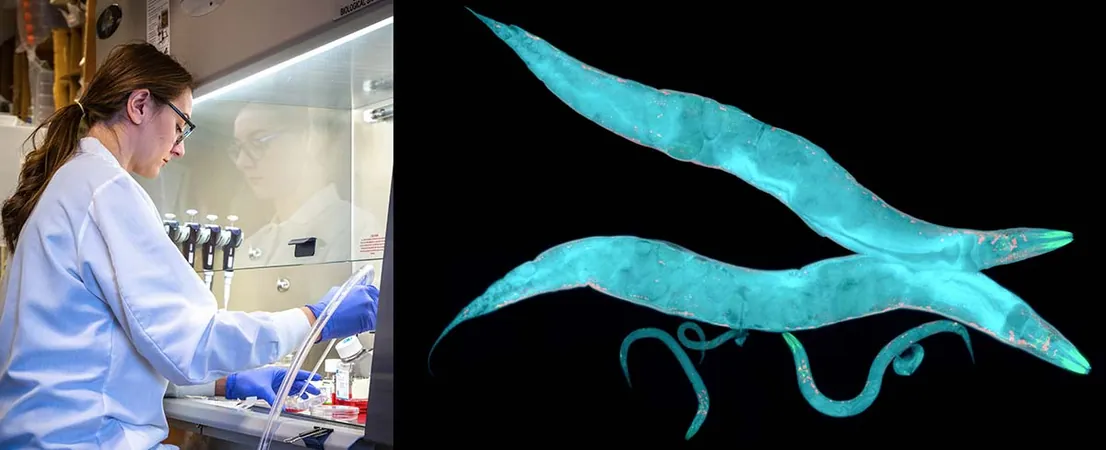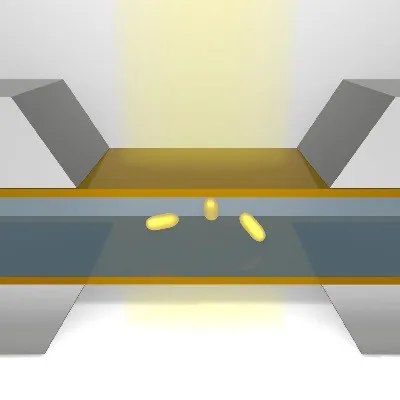
Unlocking the Secrets of Glial Cells: A Revolutionary Brain Map
2025-07-01
Author: Arjun
The Hidden Power of Glial Cells
Did you know that our brain houses a colossal 86 billion neurons? These tiny powerhouses control our bodily functions and give rise to the intricate tapestry of the human mind. However, lurking in the shadows of these famed neurons are unsung heroes: glial cells. While neurons are often celebrated for their role in communication, glial cells have largely been overlooked. But that might be about to change.
C. elegans: A Tiny Testament to Biology
Researchers have turned to Caenorhabditis elegans, a diminutive worm, to shed light on this enigmatic realm. With just 302 neurons, its simple nervous system provides startling insights comparable to human biology, earning accolades in multiple Nobel prizes over the years.
Filling the Gaps in Brain Mapping
Until now, maps of the brain largely neglected glial cells, akin to plotting a globe without detailing the oceans. A groundbreaking study from Fred Hutch Cancer Center has finally published the first-ever atlas of gene expression in glial cells of C. elegans, unveiling stunning details about these vital yet misunderstood components.
A Complete Nervous System Landscape
By integrating this new atlas with existing neuron maps, researchers have charted a comprehensive molecular and cellular landscape of an entire nervous system. This unprecedented achievement allows scientists to explore the brain at an intricate level—cell by cell, gene by gene.
The Critical Role of Glial Cells
Historically dismissed as mere support staff for neurons, glial cells are now recognized as active players. Aakanksha Singhvi, the study’s lead author, explains that recent revelations showcase how glial cells influence communication and connectivity between neurons. "We're beginning to grasp the pivotal roles these cells play, transforming our understanding of brain function," she states.
Exploring Brain Diseases and Glial Cells
Despite their significance, much about glial cells remains shrouded in mystery. Singhvi emphasizes their potential involvement in neurological disorders like epilepsy, Parkinson’s, and Alzheimer’s. Our understanding is still in its infancy, but these findings pave the way for future research breakthroughs.
Mapping a Black Box of Cells
To navigate this uncharted territory, Singhvi teamed up with computational biologist Manu Setty. Together, they employed pioneering techniques to unravel the complex gene expression patterns of glial cells, revealing a hidden world of molecular diversity.
Glial Cells: More Than Meets the Eye
Their research suggests that even glial cells that look similar may perform distinct functions based on their molecular makeup—a revelation that challenges long-held assumptions. As Singhvi puts it, "Just because it looks the same doesn't mean it serves the same purpose."
Beyond Support: The Unique Flavors of Glial Cells
With 50 glial cells identified, the researchers uncovered 32 unique clusters, indicating diverse functions and attributes among glial types. This surprising variety hints at a more intricate relationship between glial cells and brain function than previously understood.
Using Technology to Unveil Secrets
Setty and his team harnessed machine learning to predict gene expression signatures that distinguish different types of glial cells. This technology bridges the gap between raw data and meaningful biological insights, making it possible to 'taste' the distinctions between cells as diverse as various cake recipes.
A Glimpse into the Future
As researchers continue this journey into the heart of brain biology, the secrets of glial cells promise to unlock new avenues for understanding brain function and addressing neurological diseases. With each discovery, we edge closer to demystifying the black box of the brain. Are we ready to finally appreciate the vital roles glial cells play in our very essence?




 Brasil (PT)
Brasil (PT)
 Canada (EN)
Canada (EN)
 Chile (ES)
Chile (ES)
 Česko (CS)
Česko (CS)
 대한민국 (KO)
대한민국 (KO)
 España (ES)
España (ES)
 France (FR)
France (FR)
 Hong Kong (EN)
Hong Kong (EN)
 Italia (IT)
Italia (IT)
 日本 (JA)
日本 (JA)
 Magyarország (HU)
Magyarország (HU)
 Norge (NO)
Norge (NO)
 Polska (PL)
Polska (PL)
 Schweiz (DE)
Schweiz (DE)
 Singapore (EN)
Singapore (EN)
 Sverige (SV)
Sverige (SV)
 Suomi (FI)
Suomi (FI)
 Türkiye (TR)
Türkiye (TR)
 الإمارات العربية المتحدة (AR)
الإمارات العربية المتحدة (AR)